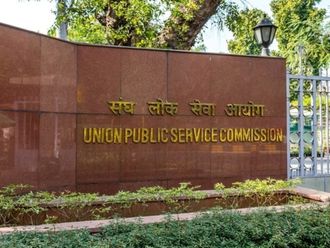
In his end-of-year press conference last week, US President Barack Obama announced he will nominate Senator Max Baucus next month as US ambassador to China. If confirmed by Congress, Baucus will take up the post in 2014 during a period of significant uncertainty in bilateral relations that is re-shaping the Asian geopolitical landscape.
This key moment comes in a context of substantial change in 2013 with a once-in-a-generation of transition of leadership in Beijing and the US ‘pivot’ of foreign policy towards Asia. In this fluid, unpredictable environment, it is perhaps unsurprising that there have been tensions between Washington and Beijing.
On December 19, for instance, following the near-collision of a US warship and a Chinese naval vessel on December 5, US Defence Secretary Chuck Hagel accused China of acting in a “very incendiary [way] that could be a trigger or a spark that could set off some eventual miscalculation”. While Hagel asserts the episode resulted from the Chinese vessel cutting in front of the US ship, Beijing claims that its vessel was conducting “normal patrols” and adhered to proper and “strict protocol”. Beyond question, the incident was the most serious Sino-US encounter in the South China Sea in several years.
Troublingly, this incident follows soon after another diplomatic flare-up when Beijing, without consultation, declared in November an air “self-defence identification zone”, which covers islands that both Japan and China claim as their own. While such air zones are commonplace across the world, Washington has expressed concern to Beijing about both its unilateral imposition and the warning to aircraft that if they do not comply with submitting flight plans unspecified “emergency defensive measures” will be taken. These and other demonstrations of Beijing’s assertiveness in 2013, including the recent refusal to participate in a UN arbitration process over a territorial conflict with the Philippines, have raised tension in Asia. In turn, this has complicated the Sino-US relationship.
A crucial question arising is whether, following the inauguration of the new leadership in China last March, we are witnessing the rise of a much more bold and forceful nation on the world stage. If so, 2013 would mark the beginning of at least a partial departure from Beijing’s previous grand strategy — premised on a gradual, peaceful and low-profile rise to power.
Certainly, Chinese President Xi Jinping’s assumption of power in 2013 has been confident and assured, but his precise international intentions remain unclear.
For instance, Xi has repeatedly voiced his desire for a relationship with the US based on peaceful cooperation. This was most strongly emphasised in June when he called for a “new type of great power relationship” at his first summit meeting with Obama. This is an audacious goal, which is still lacking in any obvious definition. Given foreign policy tensions between China and the US, however, perhaps the obvious way to realise better ties is in the economic sphere, where their are substantial shared interests in sustainable global growth. Even on this agenda, however, the two’s interests are by no means identical. This is underlined by Washington’s current championing of the Trans-Pacific Partnership trade initiative, while Beijing is simultaneously promoting its alternative Regional Comprehensive Economic Partnership.
And, it is in this context of competition that the US and China are looking to enhance their regional influence. While both countries have formidable military and economic assets to enable their ambitions, 2013 has shown Washington has an edge in the soft-power stakes. Thus, in numerous (but by no means all) key Asian countries, Washington’s ‘pivot’ towards the region is generally welcomed.
Meanwhile, there is considerable angst and concern about Beijing’s growing assertiveness. In the Philippines, for instance, 81 per cent of the population now regards the US as a “partner” and only 3 per cent as an “enemy”, according to Pew Global, compared to 22 per cent and 39 per cent, respectively, for China. In South Korea, the counterpart numbers for the US as “partner” are 69 per cent and “enemy” 4 per cent, compared to 27 per cent and 17 per cent for China. And, in Japan, the data is 76 per cent and 2 per cent for the US, compared to 11 per cent and 40 per cent for China.
While not uniform through Asia, these patterns of public opinion can only complicate the realisation of Beijing’s regional ambitions. And this is one reason why Xi has been conflicted in 2013 between his apparent desire to show a more assertive China on the world stage and his recognition that the country’s power needs underpinning by better diplomacy so there is greater international understanding (albeit not necessarily acceptance) of the country’s motivations and intentions.
With multiple potential flashpoints in 2014, it is crucial that Beijing now doubles down on enhancing its regional and global diplomacy. Unless this happens, international perceptions of the country could deteriorate further, fuelling the possibility of miscalculation and an incident triggering an explosive escalation of tension.
Andrew Hammond is a former geopolitical analyst at Oxford Analytica and a special adviser in the UK Government of Tony Blair.








